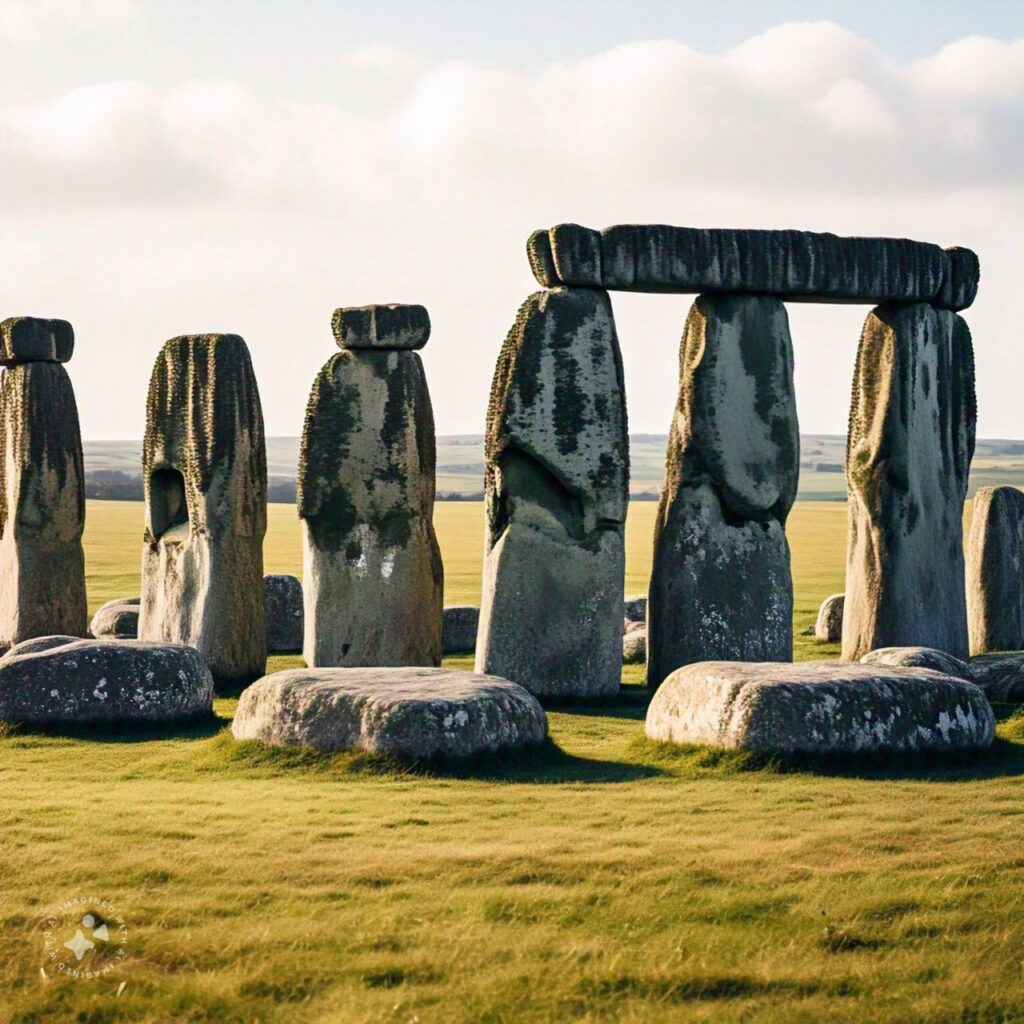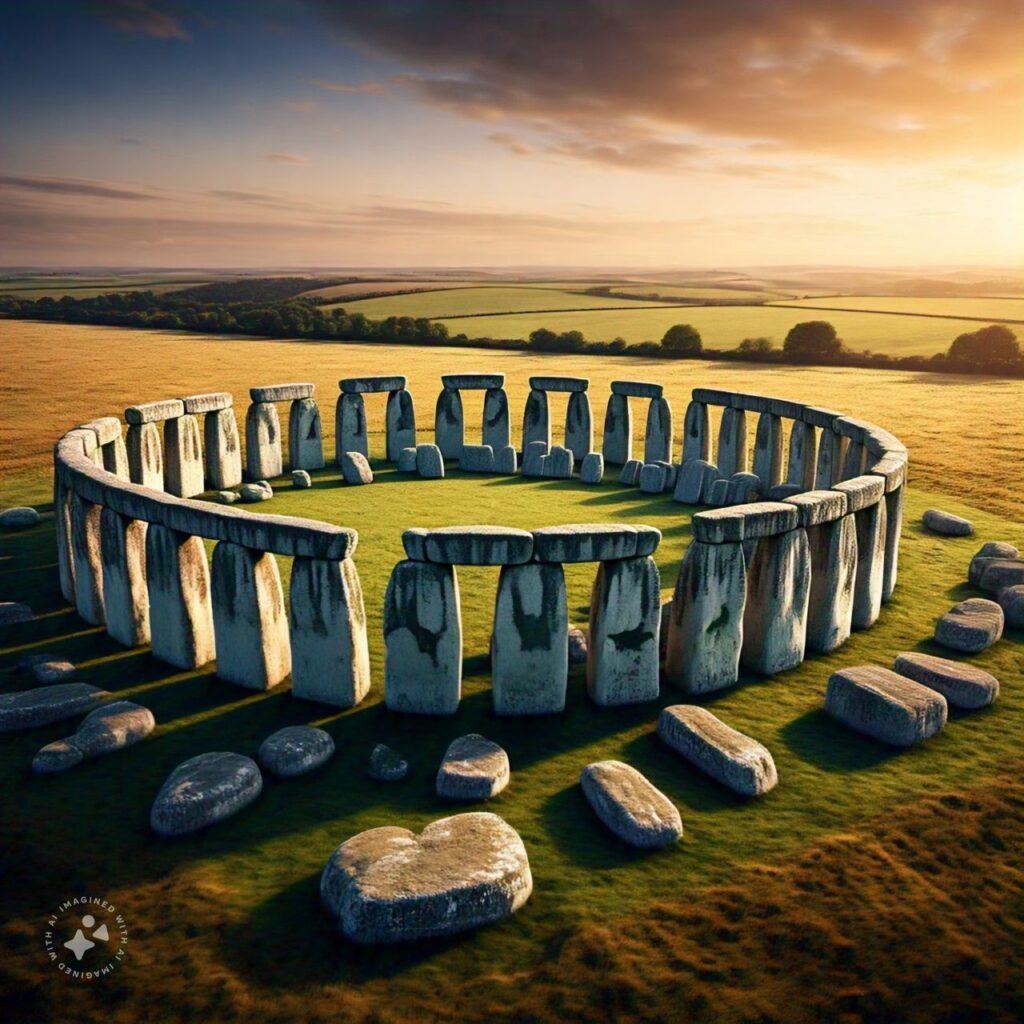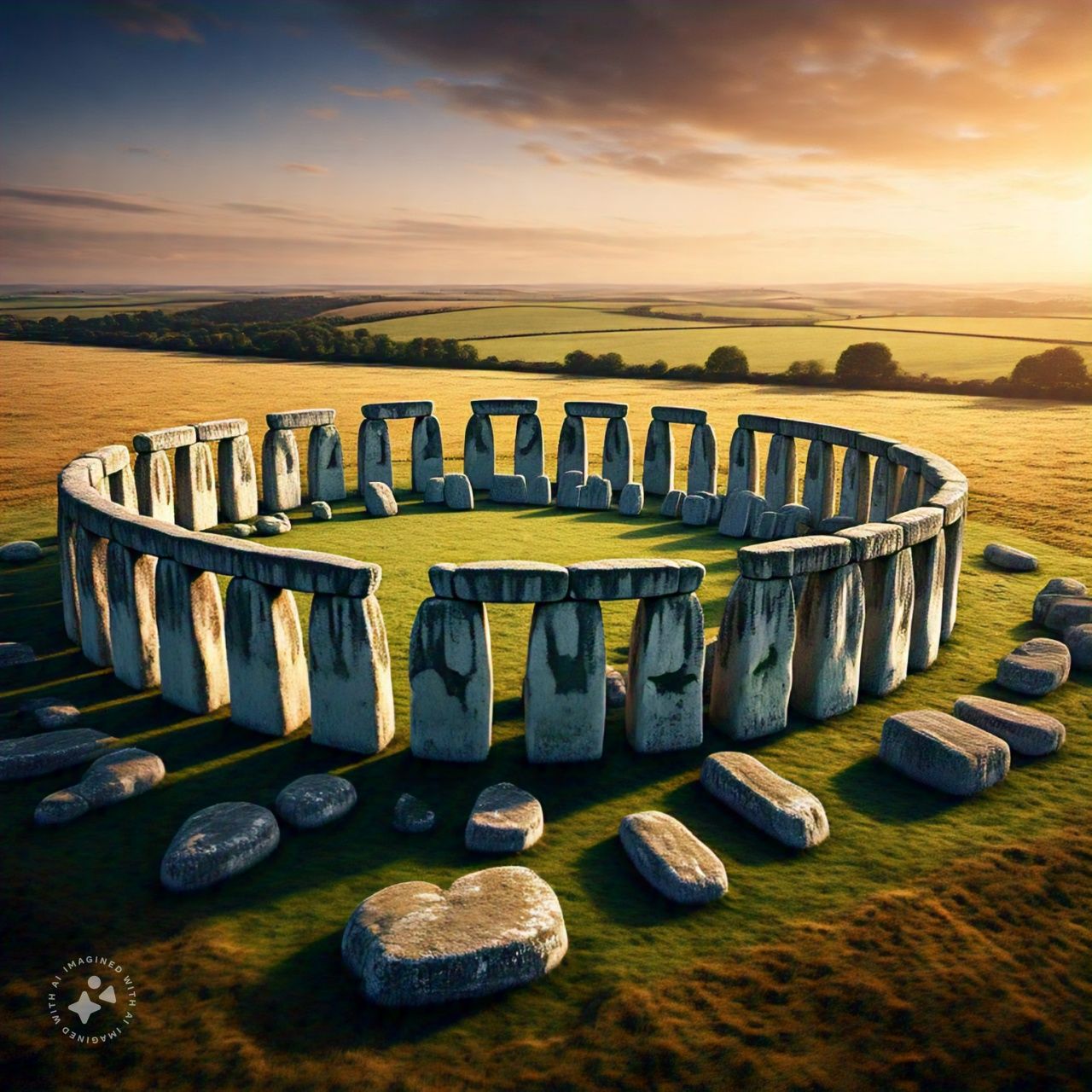Nestled on the rolling plains of southern England, Stonehenge is one of the most iconic and mysterious landmarks in the world. This prehistoric monument, composed of large stone circles, has puzzled scholars, historians, and archaeologists for centuries. Situated on the Salisbury Plain in Wiltshire, Stonehenge stands as a testament to the ingenuity of ancient peoples and their deep connection to the natural world. But despite centuries of study, the true purpose and construction methods behind this awe-inspiring site remain largely shrouded in mystery.
In this article, we will explore the history, construction, theories, and cultural significance of Stonehenge, unraveling the enigmatic monument’s many secrets.

The History of Stonehenge
The history of Stonehenge stretches back thousands of years. It is believed to have been constructed in several stages over a period of around 1,500 years, starting around 3000 BCE and continuing into 1500 BCE. The monument’s evolution reflects the changing cultural, religious, and social practices of the people who built it.
- The Early Stage (3000 BCE – 2500 BCE): The earliest phase of Stonehenge involved the creation of a circular ditch and embankment, known as a henge. This initial structure likely served as a ceremonial or sacred space. The first stones were not yet erected, but the earthwork circle itself could have held ritual significance.
- The Bluestones (2500 BCE): Around 2500 BCE, a significant transformation occurred when large stone monoliths were transported to the site. These stones, known as the bluestones, are believed to have been quarried from the Preseli Hills in Wales, approximately 150 miles (240 kilometers) away. It remains a mystery how such massive stones were transported across such a great distance with the technology of the time.
- The Sarsen Stones (2400 BCE – 1500 BCE): The final phase of construction involved the erection of the sarsen stones, large sandstone blocks weighing several tons each. These stones were placed in a circle and topped with horizontal lintels, forming the familiar arrangement of standing stones seen today. The sarsen stones are thought to have been sourced from Marlborough Downs, about 20 miles (32 kilometers) away from the site.
The completion of Stonehenge was likely a monumental effort that involved skilled laborers, religious leaders, and communities working together over many generations. The alignment of the stones, the sophisticated methods of transport, and the careful placement of each stone suggest that the monument had profound cultural, ceremonial, and astronomical significance.
The Construction of Stonehenge
The construction of Stonehenge has long fascinated historians and archaeologists. How did the ancient builders manage to transport and erect such massive stones with the limited technology available at the time? Though the exact methods remain a subject of debate, several theories have emerged based on archaeological evidence and experimental archaeology.

Transportation of Stones
The bluestones are particularly intriguing due to the distance they traveled. The theory suggests that the builders used rolly-trolleys, wooden sledges, and possibly boats to move the stones from the Preseli Hills to Stonehenge. Some scholars propose that the stones may have been dragged across land or floated by river to the site, though the details remain speculative.
The sarsen stones, which were much larger, were likely transported using similar methods, although their shorter journey may have involved easier transportation methods such as dragging or rolling them on logs.
Erecting the Stones
Once the stones arrived at Stonehenge, they had to be erected into their upright positions. It is believed that the builders used a combination of ramps, lever systems, and possibly counterweights to lift the massive stones into place. The lintels (the horizontal stones) were then carefully placed on top of the standing stones, creating the iconic stone circle and trilithon formations.
Experimental archaeologists have replicated some of these methods, demonstrating that, while challenging, it was possible to erect such large stones with rudimentary tools and techniques.
The Purpose of Stonehenge
The true purpose of Stonehenge remains one of history’s greatest mysteries. While we may never know the full extent of its significance, several theories have emerged over the years, each attempting to explain why the monument was built and what it symbolized.

1. A Religious or Ceremonial Site
One of the most widely accepted theories is that Stonehenge served as a ritualistic or religious site. Its alignment with the sun—particularly the summer solstice, when the sun rises directly over the Heel Stone—suggests that it may have been used for astronomical or seasonal ceremonies. This aligns with other prehistoric monuments in the UK that also have celestial alignments.
The presence of human remains found at the site suggests that Stonehenge may have been a place of burial or a memorial for important figures, further supporting the idea that it was a sacred space.
2. An Astronomical Observatory
Some scholars believe that Stonehenge may have functioned as an astronomical observatory. The alignment of the stones, especially during the solstices, indicates that the builders were keenly aware of the movements of the sun, moon, and stars. This could have played a role in agricultural planning, marking the changing seasons and serving as a calendar for planting, harvesting, and other seasonal activities.
3. A Healing or Pilgrimage Site
Another theory posits that Stonehenge was a healing center or pilgrimage destination. Some believe that the bluestones, which come from a location with special geological properties, were considered to have healing properties. People may have traveled to Stonehenge to seek physical or spiritual healing.
4. A Social or Political Gathering Place
Stonehenge may have also served as a place for gathering and organizing communal activities, whether for feasting, trade, or political purposes. Its large size and prominent location may have made it an ideal spot for bringing together different communities, reinforcing social cohesion and unity.
Stonehenge’s Cultural Significance
Over the centuries, Stonehenge has become an enduring symbol of Britain’s prehistoric past. It has inspired countless myths, legends, and artistic representations. In ancient times, the monument was likely seen as a place of great power and mystery, linked to ancient gods, spirits, or the cosmos. In modern times, it has retained its mystique and is often associated with the spiritual and supernatural.
Stonehenge has also played an important role in tourism and national identity. Today, it attracts millions of visitors from around the world, who come to marvel at its beauty and ponder its mysteries. The site is a UNESCO World Heritage site, recognized for its historical and cultural importance.
Preservation and Protection
Given Stonehenge’s age, significance, and popularity, preserving the site for future generations is a priority. In recent years, efforts have been made to protect Stonehenge from environmental and human damage. These efforts include restricting access to certain areas, controlling traffic near the site, and conducting ongoing research and excavation to better understand its construction and purpose.
In 2013, a new visitor center was opened, providing education and interpretation of Stonehenge’s history while helping to manage the growing number of tourists. Despite this, challenges remain in balancing the need for preservation with the desire to make Stonehenge accessible to the public.
Conclusion: The Timeless Mystery of Stonehenge
Stonehenge remains one of the world’s most remarkable and enigmatic prehistoric monuments. Its construction, purpose, and cultural significance continue to intrigue and inspire people from all walks of life. Whether viewed as a sacred site, an astronomical observatory, or a symbol of ancient engineering prowess, Stonehenge stands as a powerful reminder of humanity’s deep connection to the natural world and the mysteries that still lie at the heart of our past.
While many questions remain unanswered, Stonehenge’s enduring presence in the landscape reminds us of the creativity and vision of those who built it, and the timeless allure of ancient wonders that continue to captivate us today.
